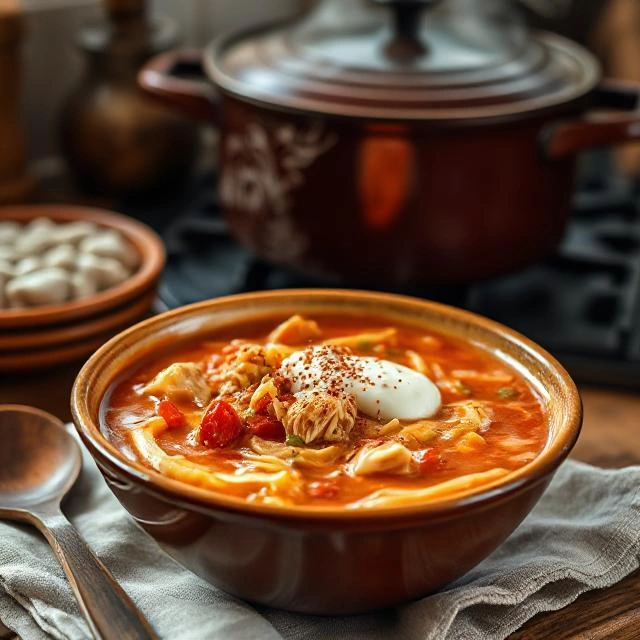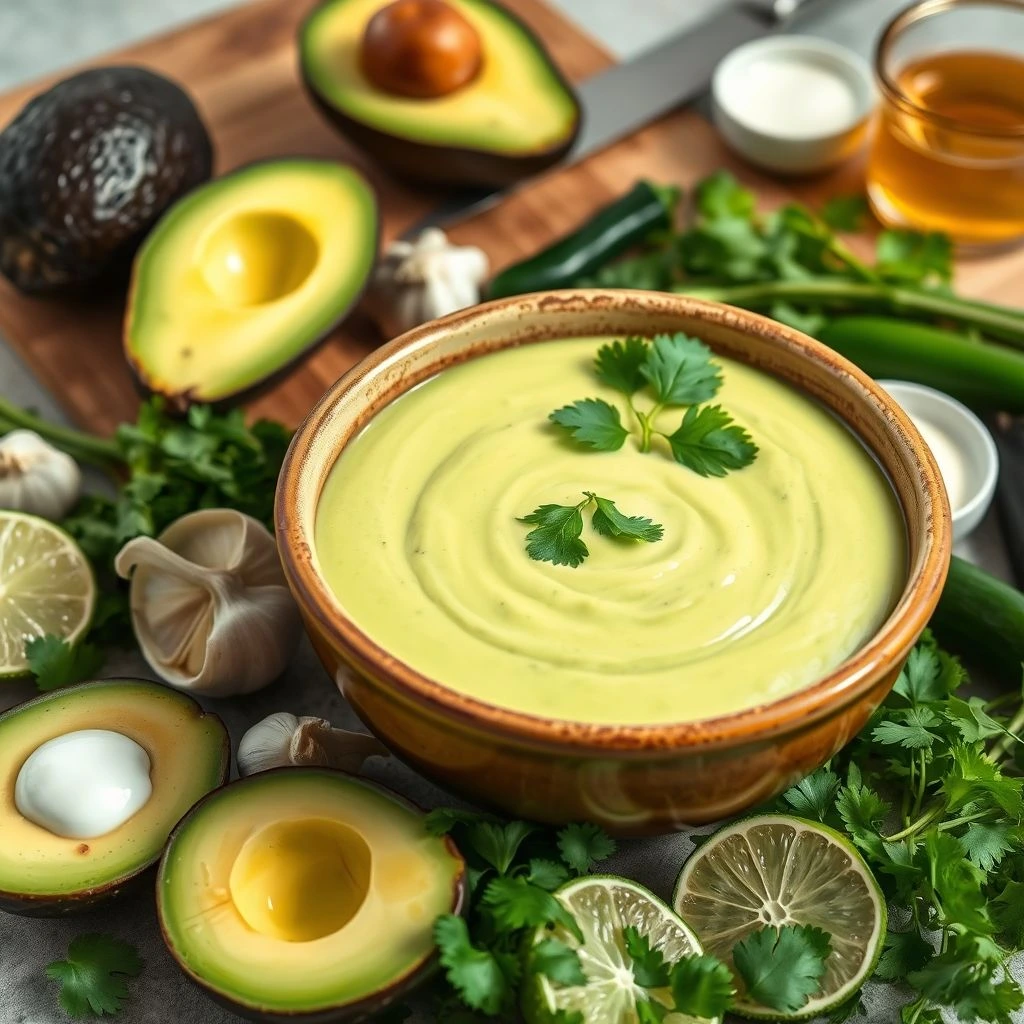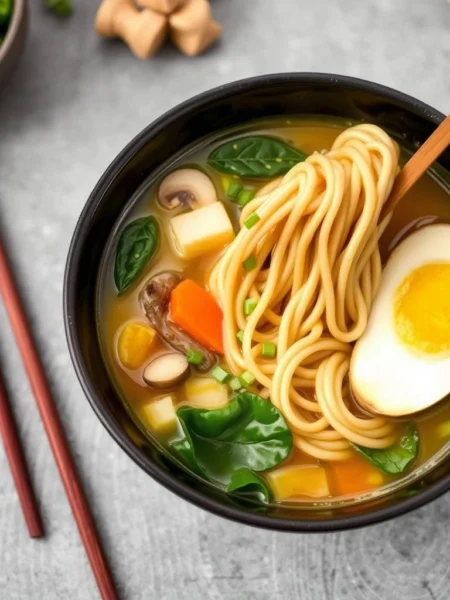Have you ever experienced the comforting warmth of a traditional Japanese taro soup on a crisp autumn day? If not, prepare to discover Imoni, the hearty, soul-warming dish that brings Japanese families together each fall. First, I’ll introduce you to this beloved seasonal tradition, and then guide you through creating an authentic version in your own kitchen that will have you craving Imoni all season long.
What Makes Imoni So Special?
Unlike ordinary soups, Imoni represents more than just a meal—it embodies community, celebration, and the changing seasons in Japanese culture. This savory taro and meat soup originated in the Yamagata Prefecture of northern Japan, where locals have gathered for Imoni-kai (Imoni parties) along riverbanks for centuries.
Moreover, each region in northern Japan prepares Imoni with slight variations, creating a rich tapestry of traditions around this seemingly simple dish. The core ingredients, however, remain consistent: taro root (satoimo), vegetables, and protein, all simmered in a flavorful broth that captures autumn’s essence.
The Cultural Significance of Imoni
Traditionally, Japanese families and friends gather outdoors in September and October for Imoni-kai, cooking massive pots of Imoni over open fires. In fact, Yamagata City hosts an annual Imoni festival featuring an enormous cauldron that serves over 30,000 people!
Beyond mere sustenance, Imoni represents the harvest season and the importance of community bonds before winter arrives. When you prepare Imoni at home, you connect with this meaningful cultural practice.
Essential Ingredients for Authentic Imoni
The heart of any proper Imoni is the taro root, called satoimo in Japanese. Additionally, you’ll need:
- Protein (beef in Yamagata style, pork or chicken in other regions)
- Konnyaku (konjac jelly)
- Mushrooms (often shiitake)
- Root vegetables (carrots, burdock root)
- Green onions
- Soy sauce, sake, and mirin for the broth
Interestingly, the flavor profile changes dramatically depending on whether you use a soy sauce base (typical in Yamagata) or miso base (common in neighboring Miyagi Prefecture).
Preparing Taro for Imoni
Before cooking your Imoni, you must properly prepare the taro root. First of all, taro contains calcium oxalate crystals that can cause skin irritation, so wear gloves when peeling it or hold it with a paper towel.
After peeling, soak the taro briefly in water with a splash of vinegar to remove the sliminess. This step ensures your Imoni achieves the perfect texture that makes this soup so satisfying.
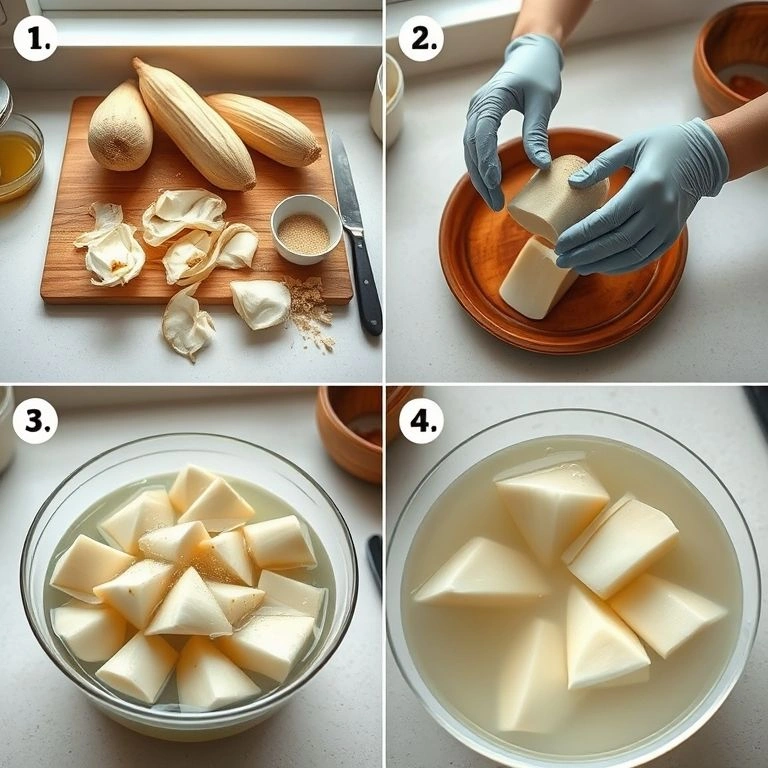
Regional Variations Worth Exploring
While I’ll share a classic Yamagata-style Imoni recipe below, it’s fascinating to understand how this dish varies across regions:
- Yamagata style: Beef-based with a soy sauce broth
- Miyagi style: Pork-based with a miso broth
- Fukushima style: Often includes wild mountain vegetables
- Akita style: Might include duck meat and local mushrooms
Consequently, once you master the basic technique, you can experiment with these regional variations to discover your favorite style of Imoni.
The Perfect Cooking Method
Traditionally, Imoni cooks slowly in a cast-iron pot called a kamado over an open fire. However, you can achieve excellent results at home using a heavy-bottomed pot or Dutch oven.
The key is allowing the ingredients to simmer gently, giving them time to release their flavors into the broth. This slow cooking process creates the depth and richness that defines authentic Imoni.
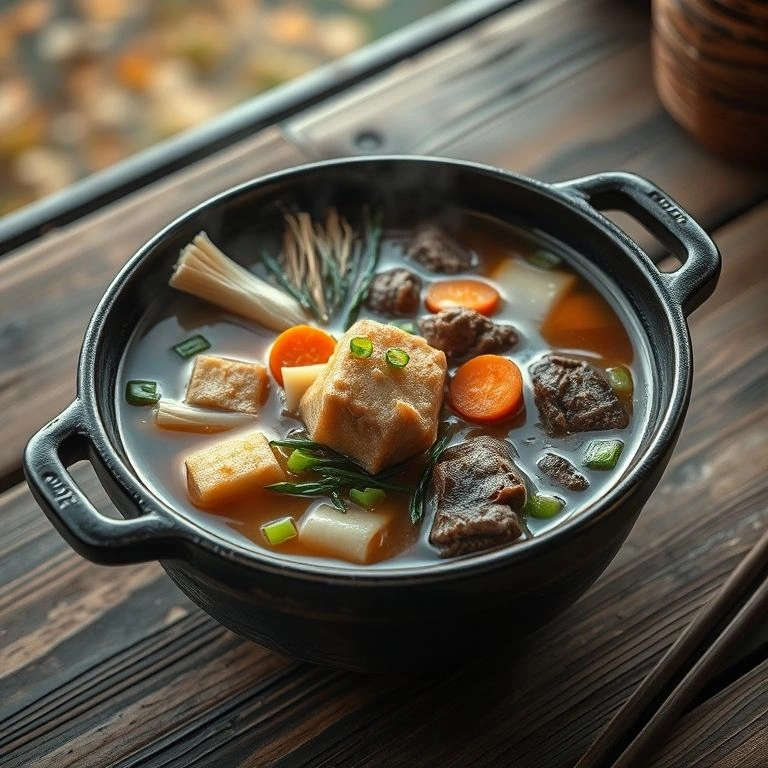
Seasonal Pairings
Since Imoni already contains protein, vegetables, and starch, it functions as a complete meal. Nevertheless, you might serve it with:
- Fresh steamed rice
- Pickled vegetables (tsukemono)
- Grilled mochi (rice cakes)
- Seasonal fruit for dessert
Together, these create a balanced autumn meal that celebrates seasonal bounty.
Storing and Reheating Tips
Like many soups and stews, Imoni often tastes even better the next day as the flavors continue to develop. Store leftovers in the refrigerator for up to three days.
When reheating, do so gently on the stovetop, adding a little water or broth if needed, as the taro will continue to absorb liquid.
Health Benefits of Imoni
Besides being delicious, Imoni offers several nutritional advantages. Taro root provides fiber and resistant starch, which supports digestive health. The variety of vegetables delivers essential vitamins and minerals.
Furthermore, the protein and root vegetables make Imoni satisfying without being heavy, providing sustained energy during the transition to cooler weather.
Creating Your Own Imoni Tradition
Even if you don’t live near a Japanese river for a traditional Imoni-kai, you can still create your own autumn tradition around this special soup.
Consider inviting friends for an Imoni gathering in your backyard or local park. The communal aspect of preparing and sharing this dish connects directly to its cultural roots and creates meaningful food memories.
Tips for Imoni Success
To ensure your Imoni turns out perfectly:
- Don’t rush the cooking process—slow simmering develops flavor
- Cut ingredients into substantial chunks for authentic texture
- Balance the sweet, savory, and umami elements in your broth
- Prepare the taro properly to avoid sliminess
- Serve in deep bowls to capture all the delicious broth
Following these guidelines will help you create Imoni that tastes authentic and satisfying.
Ready to Create This Autumn Delicacy?
Below, you’ll find my tested recipe for creating delicious Yamagata-style Imoni at home. The process is straightforward, and the results capture the essence of this beloved Japanese autumn tradition.
As soon as you take your first spoonful of this hearty, fragrant soup, you’ll understand why Japanese families have cherished Imoni for generations and why you’ll crave it all season long.
Description
Imoni is more than just a soup—it’s a cherished autumn tradition from northern Japan that warms both body and soul. Made with taro root, vegetables, and tender meat simmered in a savory broth, this dish embodies community, comfort, and the beauty of the changing seasons. Originating in Yamagata Prefecture, Imoni has long brought families and friends together for festive riverbank gatherings known as Imoni-kai. While each region offers its own unique twist, the heart of Imoni remains the same: a hearty, flavorful bowl that celebrates togetherness and the essence of fall.
Ingredients:
Instructions
-
After peeling the taro, soak it in water with a splash of vinegar for 5 minutes, then drain and rinse.
-
Parboil the konnyaku for 2-3 minutes in boiling water, then drain (this removes any bitter taste).
-
In a large pot or Dutch oven, heat the vegetable oil over medium heat.
-
Add the beef slices and cook until they begin to brown.
-
Add the taro, konnyaku, carrots, burdock root, and shiitake mushrooms to the pot.
-
Pour in the dashi stock, soy sauce, sake, mirin, and sugar. Bring to a gentle boil.
-
Reduce heat to low, cover, and simmer for about 30-40 minutes, until the taro is tender but not falling apart.
-
Add the green onions in the last 5 minutes of cooking.
-
Taste and adjust seasoning with salt if needed.
-
Serve hot in deep bowls, garnished with mitsuba or chopped green onion.
Note
- When handling taro root, wear gloves or hold it with a paper towel to avoid skin irritation.
- For a more authentic experience, cook your Imoni outdoors in a cast iron pot if possible.
- If you can't find burdock root, you can substitute with more carrots or other root vegetables.
- This Imoni will develop even more flavor if made a day ahead and reheated.



